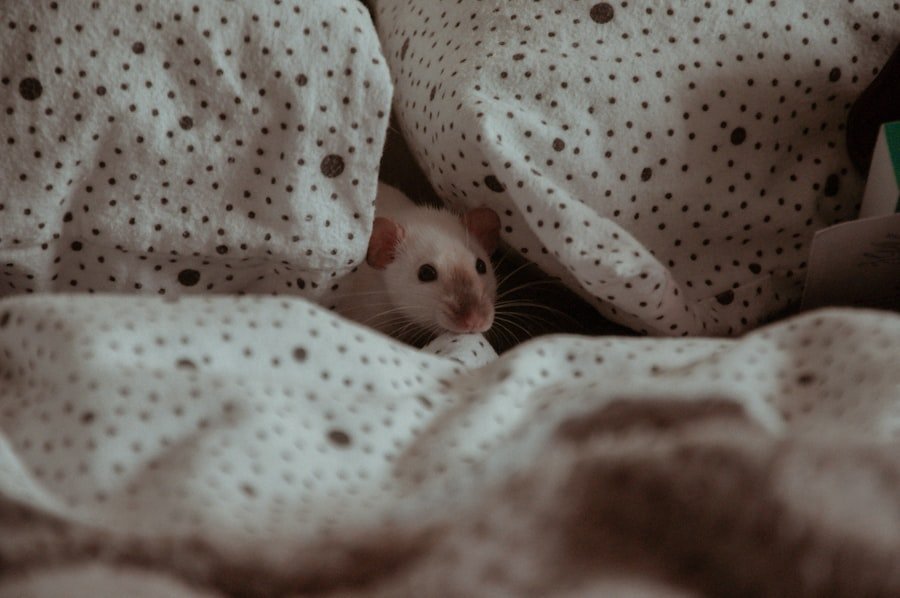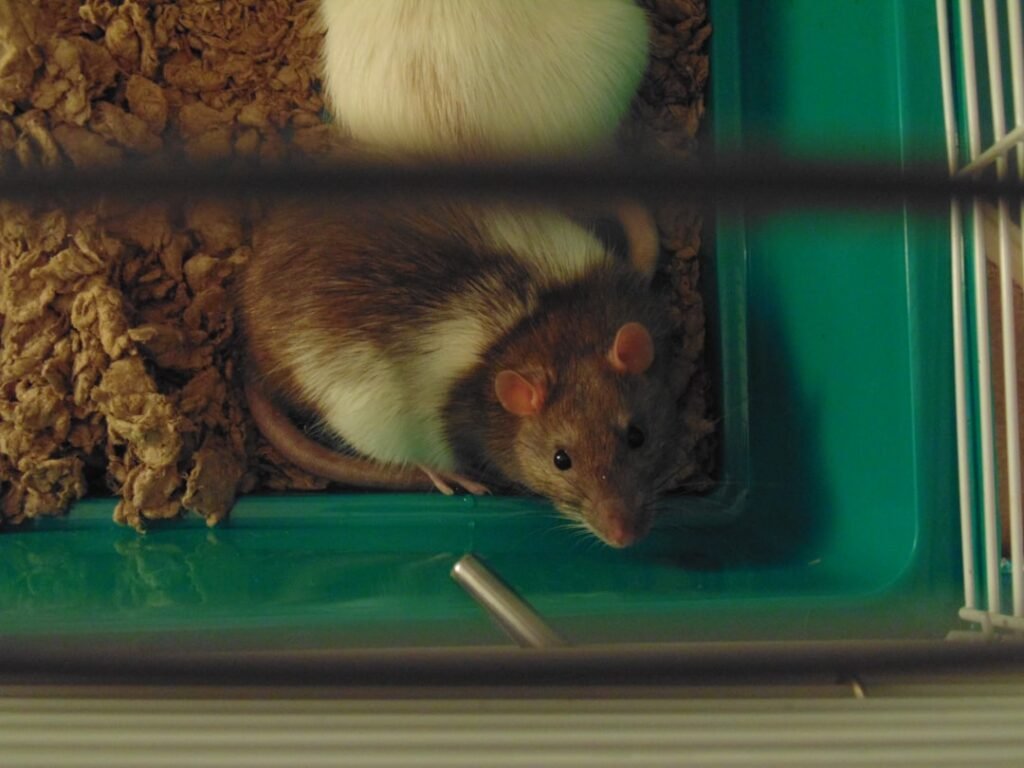Gambian Pouched Rats, also known as African Giant Pouched Rats, are large rodents native to sub-Saharan Africa. They belong to the genus Cricetomys and are closely related to other African pouched rats. These unique creatures have a fascinating history and possess several physical characteristics that set them apart from other rodents.
The history of Gambian Pouched Rats can be traced back to the 19th century when they were first discovered by European explorers in West Africa. They were initially classified as a subspecies of the African Giant Rat but were later recognized as a distinct species. Gambian Pouched Rats have since become popular pets and have been introduced to various countries around the world.
One of the most notable physical characteristics of Gambian Pouched Rats is their size. They are among the largest rodents in the world, with adults reaching lengths of up to 3 feet, including their long tails. They have a stocky build and can weigh up to 3 pounds. Their fur is coarse and ranges in color from brown to gray, with lighter underbellies. Gambian Pouched Rats also have large, round ears and long whiskers that help them navigate their surroundings.
Key Takeaways
- Gambian Pouched Rats are a species of rodent native to sub-Saharan Africa.
- They are large, with a body length of up to 18 inches and a distinctive pouch on their cheeks.
- In the wild, they live in burrows and feed on a variety of plant and animal matter.
- Gambian Pouched Rats are social animals that communicate through vocalizations and scent marking.
- While they can make interesting and affectionate pets, they require specialized care and attention to thrive.
The Physical Characteristics of Gambian Pouched Rats: Size, Color, and Features
Gambian Pouched Rats have a distinctive appearance that sets them apart from other rodents. As mentioned earlier, they are large in size, with adults measuring up to 3 feet in length. Their bodies are covered in coarse fur that can range in color from brown to gray, with lighter underbellies. This coloration helps them blend into their natural habitat.
One of the most fascinating features of Gambian Pouched Rats is their pouches. These pouches are located on the sides of their cheeks and extend from their mouth to their shoulders. The pouches are used to store food and other materials, allowing the rats to carry large quantities of items back to their nests. This unique adaptation is particularly useful in their natural habitat, where food can be scarce and the ability to transport resources is essential for survival.
Habitat and Diet of Gambian Pouched Rats: How They Survive in the Wild
Gambian Pouched Rats are native to sub-Saharan Africa, where they can be found in a variety of habitats, including forests, grasslands, and agricultural areas. They are most commonly found in countries such as Gambia, Senegal, and Nigeria. These rats are highly adaptable and can survive in both urban and rural environments.
In the wild, Gambian Pouched Rats have a diverse diet that consists of fruits, nuts, seeds, and plant material. They are also known to eat insects, small vertebrates, and carrion. Their ability to consume a wide range of food sources allows them to thrive in different environments and adapt to changing conditions.
The Social Life of Gambian Pouched Rats: Communication, Mating, and Family Structure
| Topic | Data/Metrics |
|---|---|
| Communication | Use of vocalizations, body language, and scent marking |
| Mating | Polygynous mating system, males compete for access to females, females mate with multiple males |
| Family Structure | Matriarchal society, females dominant over males, offspring stay with mother for up to a year |
Gambian Pouched Rats are social animals that live in small family groups. They communicate with each other using a combination of vocalizations, body language, and scent marking. These rats have a wide range of vocalizations, including chirps, squeaks, and growls, which they use to communicate with other members of their group.
Mating in Gambian Pouched Rats is typically monogamous, with pairs forming long-term bonds. The female rats have a gestation period of around 30 days and give birth to litters of 1-6 pups. The pups are born blind and hairless but quickly develop and become independent within a few months.
Gambian Pouched Rats as Pets: Pros and Cons of Owning These Unique Creatures
Owning a Gambian Pouched Rat as a pet can be a rewarding experience, but it also comes with its challenges. One of the main benefits of owning these unique creatures is their intelligence. Gambian Pouched Rats are highly intelligent and can be trained to perform a variety of tasks. They are also known for their affectionate nature and can form strong bonds with their owners.
However, there are also drawbacks to owning Gambian Pouched Rats as pets. One of the main challenges is their size. These rats require a large enclosure with plenty of space to roam and exercise. They also have specific dietary needs that must be met to ensure their health and well-being. Additionally, Gambian Pouched Rats have a relatively short lifespan of around 4-8 years, which can be a consideration for potential owners.
Training Gambian Pouched Rats: Can They Be Trained like Dogs?

Gambian Pouched Rats are highly trainable and can learn a variety of tasks. They have been used in various fields, including landmine detection and search and rescue operations. Their intelligence and ability to learn quickly make them ideal candidates for training.
Training Gambian Pouched Rats is similar to training dogs in many ways. Positive reinforcement techniques, such as rewards and praise, are used to encourage desired behaviors. These rats can be taught to perform tasks such as retrieving objects, navigating mazes, and even performing tricks.
Health Issues and Care of Gambian Pouched Rats: Common Diseases and How to Prevent Them
Like all pets, Gambian Pouched Rats are susceptible to certain health issues. Some of the most common diseases that affect these rats include respiratory infections, dental problems, and obesity. It is important for owners to provide proper care and regular veterinary check-ups to ensure their pets’ health.
Proper nutrition is essential for the well-being of Gambian Pouched Rats. They require a balanced diet that includes a variety of fruits, vegetables, and high-quality rodent pellets. It is also important to provide them with plenty of opportunities for exercise and mental stimulation to prevent obesity and promote overall health.
Gambian Pouched Rats in Research: How They Are Used in Scientific Studies
Gambian Pouched Rats have unique abilities that make them valuable in scientific research. One of their most notable skills is their sense of smell. These rats have an exceptional sense of smell and can detect certain substances, such as tuberculosis and landmines, with a high degree of accuracy.
Their ability to detect diseases and explosives has made them useful in various fields, including medical research and humanitarian efforts. They have been trained to detect tuberculosis in human sputum samples and have been used in landmine detection programs in countries affected by conflict.
Conservation Status of Gambian Pouched Rats: Threats and Efforts to Protect Them
Gambian Pouched Rats are currently listed as a species of least concern by the International Union for Conservation of Nature (IUCN). However, they face several threats in the wild, including habitat loss, hunting, and the pet trade. These factors have led to population declines in some areas.
Efforts are being made to protect and conserve Gambian Pouched Rats. Conservation organizations are working to raise awareness about the importance of these rats in their natural ecosystems and the need to protect their habitats. Additionally, regulations are being put in place to control the trade of these animals and prevent illegal hunting.
The Future of Gambian Pouched Rats: Potential Benefits and Challenges of Their Domestication
The domestication of Gambian Pouched Rats has the potential to offer several benefits. These rats are highly intelligent and trainable, making them suitable for a variety of tasks. They could be used in fields such as search and rescue, disease detection, and even as therapy animals.
However, there are also challenges that come with domestication. Gambian Pouched Rats have specific care requirements and need a large enclosure to thrive. Additionally, their size and unique needs may make them unsuitable for some potential owners.
In conclusion, Gambian Pouched Rats are fascinating creatures with unique physical characteristics and behaviors. They have a rich history and are highly adaptable to different environments. While they can make rewarding pets, owning them comes with its challenges. With proper care and attention, these rats can thrive in captivity and contribute to scientific research and conservation efforts.


